
:: International Transaction Journal of Engineering, Management, & Applied Sciences & Technologies
http://TuEngr.com

ISSN 2228-9860
eISSN 1906-9642
CODEN: ITJEA8
FEATURE PEER-REVIEWED ARTICLES
Vol.11(8) (2020) |
➤ Free download full issue at Google Play / Google Book
-
DEVELOPMENT OF PREPARING FEED MACHINES
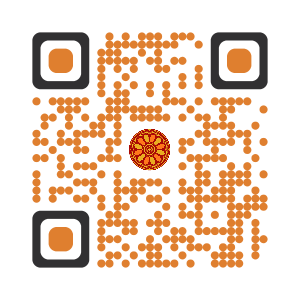 Alexey Marchenko (Department of Descriptive Geometry and Graphics, Kuban State Agrarian University named after I.T. Trubilin, RUSSIA).
Alexey Marchenko (Department of Descriptive Geometry and Graphics, Kuban State Agrarian University named after I.T. Trubilin, RUSSIA).
Disciplinary: Agricultural Machinery.
DOI: 10.14456/ITJEMAST.2020.142
Keywords: Feed technology; relational screw drum; feed production; machinary invention.
AbstractThis article presents the results of the development of a device for the production of feed in devices based on real screw drums. The novelty lies in the manufacture of the working body of the device for the continuous preparation of feed from sections, the elements of which during installation are mounted at predetermined angles both to each other and to the axis of rotation. In this case, they work like shelves, capture portions of particles of feed components and direct them towards not only each other but also opposite walls of a rotating real screw drum.
Paper ID: 11A08A -
AN EXPERIMENTAL INVESTIGATION ON PRE-PROCESSING OF ARECA LEAF FOR SHREDDING USING A DOMESTIC MIXER
 Srikantamurthy J S, Veeresh B R, Gowreesh S Subramanya, Anandkumar R Annigeri (Department of Mechanical Engineering, JSS Academy of Technical Education, Bangalore, INDIA).
Srikantamurthy J S, Veeresh B R, Gowreesh S Subramanya, Anandkumar R Annigeri (Department of Mechanical Engineering, JSS Academy of Technical Education, Bangalore, INDIA).
Disciplinary: Agricultural Waste Management, Mechanical Engineering.
DOI: 10.14456/ITJEMAST.2020.143
Keywords: Shredded areca leaf, Domestic mixer grinder; Shredding, Slicing, Grating; Recycling areca palm waste; Sustainable organic waste management; Agro-waste.
AbstractAn experimental investigation has been carried out on pre-processing of areca leaf to achieve powdered form to prepare organic fertilizer at home using a domestic high-speed mixer. From the preliminary study, it is found that time taken to decompose for the grain size in the range of 0.1 to 0.6 mm is 4-5 days. A process study is carried out by conducting experiments on various samples of pre-processed areca leaf. The fixed parameters considered for the study are the blade profile of the mixer, RPM, Power and sample quantity (0.02 kg). Controllable parameters are Moisture content in samples (Dry, soaked (15 minutes), soaked (72 minutes)), leaf size (120x20 mm, 40x20 mm, 20x20 mm and 5x5 mm), sliced, grated and combination controllable parameters (Dry, Dry-Compact, Dry-Torched, Dry-Compact-Torched, and Wet) are considered. For all the samples, time taken to bring down the powdered form (time taken for crushing) is studied.
Paper ID: 11A08B -
PROSPECTS OF USING RICE CEREALS AND FLOUR IN THE PRODUCTION OF CANNED PRODUCTS OF LONG STORAGE
 Albina Varivoda, Nadezhda Kenijz (Department of Technology for Storage and Processing of Crop Products, Kuban State Agrarian University named after I.T. Trubilin, RUSSIA),
Albina Varivoda, Nadezhda Kenijz (Department of Technology for Storage and Processing of Crop Products, Kuban State Agrarian University named after I.T. Trubilin, RUSSIA),
Nikolay Belugin (">Department of Physiology, Surgery and Obstetrics, Stavropol State Agrarian University, RUSSIA),
Yuri Belugin (Department of Economics and Management, Belgorod University of Cooperation, Economics and Law, Stavropol Institute of Cooperation (branch), RUSSIA).
Disciplinary: Food and Nutrition Sciences.
DOI: 10.14456/ITJEMAST.2020.144
Keywords: Rice flour; cereals; starch; thickener; biological value; nutritional value; canned food.
AbstractThe article is devoted to the study of prospects and the possibility of introducing into the production of rice cereals and flour for canned products of long-term storage. It has been established that in food production it is simpler, cheaper, faster to use starch-containing raw materials instead of pure starch. The nutritional and biological value of the feedstock was studied and it was noted that rice and rice flour do not contain fat, gluten (a protein containing gliadin) - an irritant of the gastrointestinal tract and do not have allergic properties, have a neutral taste and a clean aroma. Based on a complex of studies, it was found that in canning it is advisable to use: rice flour as a thickener, structure-forming agent and partially filler in the production of various sauces, jelly, desserts, creams, marmalades, jams, etc .; Rice groats as a filler in the production of a variety of cereals, pastes, pastes, second and first courses.
Paper ID: 11A8C -
INTER-CITY BUS SERVICE QUALITY AND THE PSYCHOLOGICAL WELL-BEING OF TRAVELERS: A CASE OF LONG-DISTANCE ROUTE IN PAKISTAN
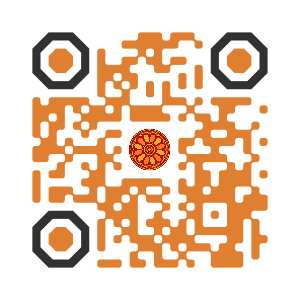 Abaid Ur Rehman (School of Psychology, Shaanxi Normal University, Xi’an, CHINA and Department of Psychology, Bahauddin Zakariya University, Sub Campus Layyah, Punjab, PAKISTAN),
Abaid Ur Rehman (School of Psychology, Shaanxi Normal University, Xi’an, CHINA and Department of Psychology, Bahauddin Zakariya University, Sub Campus Layyah, Punjab, PAKISTAN),
Samina Aisha, (Department of Psychology, Institute of Southern Punjab, Multan, PAKISTAN),
Mohsin Atta, (Department of Psychology, University of Sargodha, Multan, PAKISTAN),
You Xuqun (School of Psychology, Shaanxi Normal University, Xi'an, CHINA),
Zain Abbas(Department of Sociology, Bahauddin Zakariya University, Multan, PAKISTAN).
Disciplinary: Psychology (Social Psychology, Customer Service Psychology), Social Engineering.
DOI: 10.14456/ITJEMAST.2020.145
Keywords: Overall Service; Availability of bus stop; Long distance travelers; Bus service quality; Psychology well-being of travelers; Punctuality; Intercity travel.
AbstractLong-distance travel is perceived as a burden by the travelers. In recent years, people preferred to travel by mode of luxury buses for inter-city travel. Luxury bus companies have launch facilities in terms of service quality for their travelers. Therefore, the current study examined the role of service quality, provided by liberalized transport companies, and its sub-components on the psychological well-being of long-distance travelers. For this study, a sample of 400 long-distance/inter-city travelers from Multan to Karachi (938 Kilometers) was approached. The age of participants ranged from 20 to 60 years (M = 40.53, SD = 9.15). The data was collected with the help of self-report measures based on service quality questionnaires and psychological well-being scale of travelers at bus terminals. The findings demonstrated that service quality was significantly related to psychological well-being. Regression analysis revealed that service quality affects travelers' psychological well-being during their travel except for personal security sub-component. The study provides valuable bases for future research in the context of long-distance travelers' mode choice in case of long-distance route travel.
Paper ID: 11A8D -
EFFECTS OF SALINITY AND NITRATE ON CORAL HEALTH LEVELS: A CASE STUDY OF HUMP CORAL (Porites sp.)
 Kittiya Samlansin, Petchporn Chawakitchareon (Department of Environmental Engineering, Chulalongkorn University, Bangkok 10330, THAILAND),
Kittiya Samlansin, Petchporn Chawakitchareon (Department of Environmental Engineering, Chulalongkorn University, Bangkok 10330, THAILAND),
Sompop Rungsupa (Aquatic Resources Research Institute, Chulalongkorn University, Bangkok 10330, THAILAND).
Disciplinary: Environmental Science and Engineering, Marine Sciences.
DOI: 10.14456/ITJEMAST.2020.146
Keywords: Salinity effect; LC50; Coral health chart; Coral health levels; Acute toxicity test; Nitrate effect; Zooxanthellae density; Hump coral; Coral bleaching.
AbstractThis research focused on the effect of salinity and nitrate on coral health levels in hump coral (Porites sp.). The corals incubated under salinity vary in 15, 20, 25, and 30 psu, and nitrate vary in 5, 20, 60, and 100 µg-N/l with triplicate experiments. The experimental results showed that the range of salinity in 20, 25 and 30 psu at 120 hours was unable to calculate LC50 (Lethal Concentration) because of insufficient in motility percentage. However, the results showed that 15 psu of salinity at 120 hours was able to calculate LC50 using Probit analysis. LC50 in 15 psu of salinity at 120 hours was equally to 105.40 µg-N/l. The loss of Zooxanthellae from coral tissues could observe by the change in color as coral slowly turning into paling color but there were no releasing mucus and tissue damage as tissue sloughed-off observed in any treatments in this study because of the highly tolerant to reduced salinity and high nitrate in Porites sp. The experimental results showed that the corals incubated under separately high nitrate or reduced salinity treatment indicated an increased amount of loss of Zooxanthellae. Then, the combination of salinity and nitrate exposure in coral can create more stressful conditions and adversely affect coral health status than exposure to salinity or nitrate alone.
Paper ID: 11A8E -
EFFECTS OF BASEL EQUITY AND LIQUIDITY REGULATIONS ON BANKING SECTOR FAILURE RISK IN EMERGING ASIAN ECONOMIES
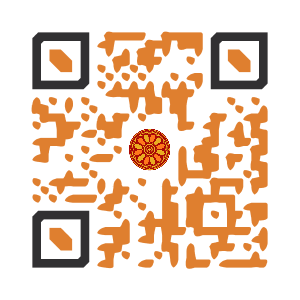 Yasmeen Akhtar, Ghulam Mujtaba Kayani (Department of Management Science, COMSATS University Islamabad 44000, PAKISTAN).
Yasmeen Akhtar, Ghulam Mujtaba Kayani (Department of Management Science, COMSATS University Islamabad 44000, PAKISTAN).
Disciplinary: Management, and Financial Science.
DOI: 10.14456/ITJEMAST.2020.147
Keywords: Liquidity creation; Basel equity requirements; Bank failure risk; Dynamic panel GMM Capital structure; Emerging Asian economies; z-score.
AbstractWe study the effect of Basel equity requirements and liquidity creation measures on banking sector failure risk in case of emerging Asian economies for 2004-2017 by using dynamic panel GMM methodology. This study results show that a rise in equity requirements is likely to decrease in failure risk (as the higher z-score implies the reduced failure risk). The finding suggests that by an incremental increase in equity ratio, liquidity creation results a rise in bank default risk. The finding is consistent with the argument that liquidity generation function exposes banking industry towards risk of illiquidity. The findings also suggest the positive relationship amid bank capital structure and z-score, which implies a surge of equity in bank capital structure is likely to reduce the failure risk.
Paper ID: 11A8F -
TECHNOLOGICAL AND TECHNICAL IMPROVEMENT OF CROP CULTIVATION PROCESSES
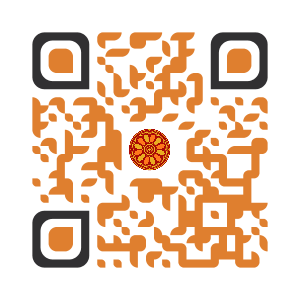 Gennady Maslov, Nikolai Rinas, Elena Yudina, Nikolai Malashikhin (Department of Operation Machine and Tractor Park, Kuban State Agrarian University named after I.T. Trubilin, RUSSIA).
Gennady Maslov, Nikolai Rinas, Elena Yudina, Nikolai Malashikhin (Department of Operation Machine and Tractor Park, Kuban State Agrarian University named after I.T. Trubilin, RUSSIA).
Disciplinary: Crop Science, Agricultural Machinery and Technology.
DOI: 10.14456/ITJEMAST.2020.148
Keywords: Field technology; Mechanization; Crop machinery; Combination of operations; Technical equipment efficiency; Spiral screw roller; Sowing unit.
AbstractThis article presents the technological and technical principles for improving the technology of cultivating field crops by optimizing them. New technological principles significantly improve technology by combining operations on tillage, sowing, fertilizing, harvesting, and technical - reducing the list of machines, the use of universal energy tools, multifunctional units that qualitatively implement the technology. The novelty of the research consists in the rational acquisition of machine units in accordance with the inventions of the authors. This will help to obtain improved results of technical and economic efficiency, such as labor productivity, energy intensity of processes and the cost of investing in the mechanization of technological processes.
Paper ID: 11A8G -
AN EXPERIMENTAL BATHYMETRY SURVEY USING A SMART IoT PONTOON IN THAILAND
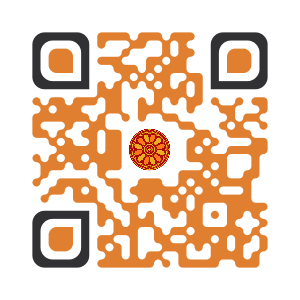 Passapong Tanpaibool, Kritsada Anantakarn (Department of Civil Engineering, Faculty of Engineering and Architecture, Uthenthawai Campus. Rajamongala University of Technology Tawan-ok, THAILAND),
Passapong Tanpaibool, Kritsada Anantakarn (Department of Civil Engineering, Faculty of Engineering and Architecture, Uthenthawai Campus. Rajamongala University of Technology Tawan-ok, THAILAND),
Rerkchai Fooprateepsiri (Department of Information Technology, Faculty of Business and Information Technology, Rajamongala University of Technology Tawan-ok, THAILAND),
Wunchock Kroehong (Department of Civil Engineering, Faculty of Engineering and Architecture, Uthenthawai Campus. Rajamongala University of Technology Tawan-ok, THAILAND),
Boonsap Witchayangkoon (Department of Civil Engineering, Thammasat School of Engineering, Thammasat University, THAILAND).
Disciplinary: Multidisciplinary (River Engineering, Navigation Engineering, Civil Engineering, Information Technology).
DOI: 10.14456/ITJEMAST.2020.149
Keywords: Smart river; Smart pontoon; Smart water currents; IoT pontoon; Internet of Thing (IoT); Hydrological survey; Bathymetry survey; Echo-sounder; GNSS; RTK; DOL.
AbstractWater resource management is a very important matter from several points of view such as water availability, quality monitoring, and distribution. The traditional bathymetric method with man on-board operation makes it difficult to collect bathymetric data in polluted water and bad weather condition. To produce the bathymetric and topographic map of the river, the research works use a pontoon made by polyethylene (PE) with echo-sounder equipment and high-end Global Navigation Satellite System (GNSS) device. Wireless communication such as local mobile 4G/3G is employed to collect geographic positioning and bathymetric data from the Thachin rivers. The integrated smart IoT pontoon system is developed and an accuracy test is conducted in this research. The advantage of this system is an unmanned on-board operated boat that can safely work in polluted water and all-weather conditions. Geographic positioning coordinate is measured by using GNSS Real-Time Kinematic (RTK) networks from the Department of Land (DOL) of Thailand and bathymetric data is collected with echo sounder. The research result, the bathymetric and topographic map of the river has Root Mean Square Error (RMS) 22cm. The outcome of an accuracy assessment of the Smart IoT Pontoon can become an effective tool for a bathymetric survey for water resource management.
Paper ID: 11A8H RELATIONSHIP BETWEEN NEW MEDIA LITERACY AND MOTIVATION IN SOLVING FAKE NEWS PROBLEM
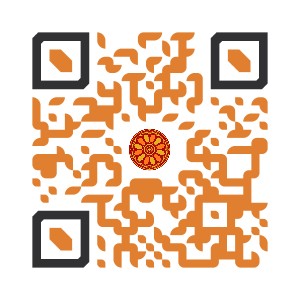 Hasmah Zanuddin, Chin Ying Shin (Department of Media and Communication Studies, Faculty of Arts and Social Sciences, University of Malaya, MALAYSIA).
Hasmah Zanuddin, Chin Ying Shin (Department of Media and Communication Studies, Faculty of Arts and Social Sciences, University of Malaya, MALAYSIA).
Disciplinary: Media and Communication Science, Information Technology, Social Engineering.
DOI: 10.14456/ITJEMAST.2020.150
Keywords: Stopping fake news; Media literacy level; Fake online news; Critical thinking in media creation; Misinformation; Curbing false news; Untruthful online story; Critical presumption; Functional presumption; Critical consumption; Functional consumption.
AbstractFake news affects individuals and society in many countries including Malaysia. To stop fake news from being widespread, apart from the government's effort, the role of the public and their new media literacy in dealing with this problematic situation should be given attention. Hence, this study was initiated to measure the level of new media literacy among the respondents and to examine the relationship between new media literacy and motivation in solving fake news problem. Data were collected through a survey among university students in Malaysia. The findings showed that only critical prosumption significantly contributed to motivation in solving fake news problem, and this dimension was also found to be the lowest level among the respondents. The findings shed light upon the need to train the public on critical thinking in media creation as another necessary effort in tackling fake news problem.
Paper ID: 11A8I-
ECONOMIC ANALYSIS OF CROPS PRODUCTION USING A TRICKLE IRRIGATION SYSTEM
 Walid M. A. Khalifa (Department of Civil Engineering, University of Hail, SAUDI ARABIA and Department of Civil Engineering, University of Fayoum, EGYPT).
Walid M. A. Khalifa (Department of Civil Engineering, University of Hail, SAUDI ARABIA and Department of Civil Engineering, University of Fayoum, EGYPT).
Disciplinary: Civil Engineering (Irrigation Engineering), Agricultural Sciences (Crop Science).
DOI: 10.14456/ITJEMAST.2020.151
Keywords: Save water; Irrigation water management; Trickle irrigation, Field crops, Crops rotations; Crop productivity; Economics; Benefit-cost ratio (B/C).
AbstractRising water scarcity in many parts over the world especially in Arab countries needs increased water productivity to support the current agricultural production levels. Trickle irrigation system introduced relatively recently in Arab countries such as Egypt has proved to save substantial water and boost crops' productivity. This study performs the economic analysis on seven crops and nine vegetables using the trickle irrigation system in a hypothetical field in Egypt based on the physical and economic conditions. Economic analysis measures of benefit-cost ratio (B/C) and net return values (B-C) were estimated. The crops considered in the study were: sugar beet, lupine, lentil, chickpea, soybean, sesame, and peanuts. Besides, the concerning vegetables were: tomato, onion, garlic, peas, cabbage, eggplant, watermelon, cantaloupe, and cowpea. The study presented some suitable growing rotations among the crops and vegetables. This study results showed that higher values of net returns were attained for most crop rotations. Further, most of B/C for crop rotations have been ranged between 1.5 and up to more than 2.0. These estimated results corroborated that investment in trickle irrigation is economically highly viable for arable lands such as Arab countries.
Paper ID: 11A8J -
SMART IoT PONTOON MANEUVERING ALONG RIVER CURRENTS
 Piya Sripakorn, Kritsada Anantakarn (Department of Civil Engineering, Faculty of Engineering and Architecture, Uthenthawai Campus. Rajamongala University of Technology Tawan-ok, THAILAND),
Piya Sripakorn, Kritsada Anantakarn (Department of Civil Engineering, Faculty of Engineering and Architecture, Uthenthawai Campus. Rajamongala University of Technology Tawan-ok, THAILAND),
Rerkchai Fooprateepsiri (Department of Information Technology, Faculty of Business and Information Technology, Rajamongala University of Technology Tawan-ok, THAILAND),
Wunchock Kroehong (Department of Civil Engineering, Faculty of Engineering and Architecture, Uthenthawai Campus. Rajamongala University of Technology Tawan-ok, THAILAND),
Boonsap Witchayangkoon (Department of Civil Engineering, Thammasat School of Engineering, Thammasat University, THAILAND).
Disciplinary: Multidisciplinary (River Engineering, Navigation Engineering, Civil Engineering, Information Technology).
DOI: 10.14456/ITJEMAST.2020.153
Keywords: Smart river; Smart water currents; IoT pontoon; Internet of Thing (IoT); Hydrological survey; Bathymetry survey; Echo-sounder; Smart pontoon; GNSS; RTK; DOL.
AbstractManeuver river currents are important to better understand environmental conditions, eutrophication problems, and fishing activities in the river estuary. The study aims to invent and develop the smart IoT pontoon for hydrological surveying in polluted and dangerous conditions with non-stop operation. the study uses a bulb made by polyethylene (PE) with echo-sounder equipment and high-end Global Navigation Satellite System (GNSS) device. Wireless communication such as local mobile 4G/3G is employed to collect geographic positioning and bathymetric data from rivers. The integrated system is called the smart IoT pontoon is developed and identify maneuver river currents. The study was conducted in the Thachin river in Nakhon Pathom province in Thailand. The depth of the river was collected from the echo-sounder single beam and the speed of movement was calculated from the high accuracy position that was collected from the RTK GNSS system. The results found that the speed of the pontoon movement has a negative correlation of different angle directions. This solution brings many benefits to bathymetric surveyors who work on river and ocean in bad weather and water polluted areas. The results of the study provide an IoT Smart technology for river currents behavior such as environmental monitoring and flood warning systems.
Paper ID: 11A8K -
ROLES OF HUMAN RESOURCE PRACTICES IN ENHANCING EMPLOYEES RETENTION: EVIDENCE FROM BANKING SECTOR OF SHAHEED BENAZIRABAD, PAKISTAN
 Muhammad Hafeez (Department of Business Administration, Shaheed Benazir Bhutto University, Shaheed Benazirabad, PAKISTAN and Putra Business School, University of Putra Malaysia, MALAYSIA),
Muhammad Hafeez (Department of Business Administration, Shaheed Benazir Bhutto University, Shaheed Benazirabad, PAKISTAN and Putra Business School, University of Putra Malaysia, MALAYSIA),
Irum Jamali (Department of Business Administration, Shaheed Benazir Bhutto University, Shaheed Benazirabad, PAKISTAN ),
Altaf Hussain (Department of Business Administration, Shaheed Benazir Bhutto University, Shaheed Benazirabad, PAKISTAN and Putra Business School, University of Putra Malaysia, MALAYSIA),
Ida Md. Yasin, Maeenuddin (Putra Business School, University of Putra Malaysia, MALAYSIA),
Naveed Wahid(Department of Business Administration, Shaheed Benazir Bhutto University, Shaheed Benazirabad, PAKISTAN),
Ashfaq Ahmad (Putra Business School, University of Putra Malaysia, MALAYSIA),
Zuhair Abbas (Faculty of Management and Economics, Tomas Bata University Zlin, CZECH REPUBLIC).
Disciplinary: Management Science (HRM).
DOI: 10.14456/ITJEMAST.2020.152
Keywords: Training and development; Rewards and compensation; Working environment; Employee Retention; Human resource management.
AbstractThe research objective focuses on the roles of Human Resource Practices in enhancing employee retention. A sample consisting of 199 employees based on a simple random sampling method is selected from the banking sector of Shaheed Benazir Abad. A questionnaire was adopted to collect data. This study applied regression and correlation for data analysis. The empirical findings determine a strong relationship between employees' retention and Human Resource Practices. Besides that, this study illustrates that human resource practices may enhance strong employee ownership in an organization which may reduce employees' turnover. We can presume that human resource practices may play a constructive and beneficial role to enhance employees' retention in the banking sector of Shaheed Benazir Abad.
Paper ID: 11A8L -
3D DOCUMENTATION OF CULTURAL HERITAGE SITES USING DRONE AND PHOTOGRAMMETRY: A CASE STUDY OF PHILIPPINE UNESCO-RECOGNIZED BAROQUE CHURCHES
 January D. Febro (Department of Information Technology, MSU-Iligan Institute of Technology, PHILIPPINES).
January D. Febro (Department of Information Technology, MSU-Iligan Institute of Technology, PHILIPPINES).
Disciplinary: Information Technology, Spatial/Geomatics Engineering.
DOI: 10.14456/ITJEMAST.2020.154
Keywords: Drone photogrammetry; Drone survey; Cultural Heritage 3D Documentation; Church 3D model; Photogrammetry workflow; Digital cultural heritage site documentation.
AbstractCultural heritage sites are legacies that must be preserved. However, anytime it can be ruined, no one can guarantee its continuance. For this reason, one should ensure that they are well-documented. In this study, a photogrammetry technique was used to generate 3D replicas of the Philippine Baroque churches that can be viewed online. A drone was used to acquire data images to test its feasibility as a practical and viable inexpensive tool for digital cultural heritage site documentation. The conclusion of this study greatly benefits the nation considering that digital documentation of cultural heritage sites as the Baroque churches were possible to accomplished by simply using a low-cost, non-intrusive technique, ideal for documenting cultural heritage sites with a high level of accuracy. Furthermore, key factors to be considered for outdoor, large-sites photogrammetry using drones were presented.
Paper ID: 11A8M -
MEDIATING EFFECTS OF ICT ON THE RELATIONSHIP BETWEEN STUDENTS' ATTITUDE AND ANXIETY TOWARDS SCIENCE
 Abdul Sattar Ghaffari (Zhongtai Securities, Institute for Financial Studies, School of Mathematics, Shandong University, Jinan, CHINA),
Abdul Sattar Ghaffari (Zhongtai Securities, Institute for Financial Studies, School of Mathematics, Shandong University, Jinan, CHINA),
Saima Javed, Tariq Mehmood Bhuttah, Hakim Ullah (School of Education, Shaanxi Normal University, No. 199, South Chang'an Road, Xi'an, 710062,CHINA).
Disciplinary: Education Sciences (Information Technology in Education).
DOI: 10.14456/ITJEMAST.2020.155
Keywords: Attitude towards science; Science learning; Students' anxiety; Science students; Technology attitude learning; ICT in Education.
AbstractThis study analyzes the impacts of technology on the relationship between students' anxiety and their attitude towards science through the mediating analysis. This method was based on 350 questionnaires filled by only science students in Lahore, Pakistan. The study showed that students' attitudes towards technology for learning mediate the relationship between their students' anxiety and attitudes towards science completely. Moreover, male students are more inclined towards science as well as technology learning as compared to female students. however, anxiety towards science is higher in female students as compared to male students.
Paper ID: 11A8N -
DETERMINATION OF STOCK RETURNS USING FIVE-FACTOR CAPM: EVIDENCE FROM PSX
 Saira Munir, Muhammad Sajjad, Asad Afzal Humayon, Muhammad Irfan Chani (Department of Management Sciences, COMSATS University Islamabad, Vehari Campus, PAKISTAN).
Saira Munir, Muhammad Sajjad, Asad Afzal Humayon, Muhammad Irfan Chani (Department of Management Sciences, COMSATS University Islamabad, Vehari Campus, PAKISTAN).
Disciplinary: Management and Financial Science.
DOI: 10.14456/ITJEMAST.2020.156
Keywords: Capital Assets Pricing Model (CAPM); Below market value; Premium; Firm Size; Financial Sector; Investment; Profitability; Book-to-Market value (BMV).
AbstractStock returns indicate variations in future economic activity but literature is inconclusive in defining this relationship. To elucidate this relationship, the study empirically analyzes the impact of stock returns using the Capita Pricing Model (CAPM). Data is accessed from the Pakistan Stock Exchange (PSX) monetary sector for 2002-2017. Premium, Book-to-Market value (BMV), investment, size, and market value were taken as the predictors of Stock Returns. Panel regression analyses were used to estimate the relationship between the observed variables. For further analysis, the random and fixed model analysis was applied. In comparison with random and fixed models, it was observed that the fixed model has the least preference over the random model, so the fixed model analysis was opted to estimate the stock returns. It was observed that the fixed effect model should be preferred over the random effect model to estimate the stock returns. Empirical results revealed that there was a progressive and statistically significant relation among premium, size, investment, and profitability on stocks while BMV had positive but inconsequential relation with stocks. This study also clinched that Fama and French five factors are the best predictors of stock returns of financial firms in the Pakistani context.
Paper ID: 11A8O -
SUSTAINABILITY OF AFFORDABLE HOUSING: A REVIEW OF ASSESSMENT TOOLS
 Hillary Tan Yee Qin, Lim Poh Im (Department of Architecture & Sustainable Design, Lee Kong Chian Faculty of Engineering and Science, Universiti Tunku Abdul Rahman, MALAYSIA),
Hillary Tan Yee Qin, Lim Poh Im (Department of Architecture & Sustainable Design, Lee Kong Chian Faculty of Engineering and Science, Universiti Tunku Abdul Rahman, MALAYSIA),
Olanrewaju AbdulLateef (Faculty of Engineering and Green Technology, Universiti Tunku Abdul Rahman, MALAYSIA).
Disciplinary: Architectural Science (Sustainable Housing and Policy).
DOI: 10.14456/ITJEMAST.2020.157
Keywords: Housing sustainable assessment; High-rise affordable housing; High-rise building; Social Impact Assessment (SIA); Framework of sustainability assessment.
AbstractThis paper aims to examine the current sustainability assessments of affordable housing in Malaysia by reviewing existing tools used in project development. In line with global concerns on sustainable development and advancement in the development of tools accessing sustainability, Malaysia has also implemented similar green assessment systems such as Green Building Initiative (GBI), Green Real Estate (GreenRE), the Environmental Impact Assessment (EIA), Low Carbon Building Assessment, etc. The scope and focus of each are somewhat different, with each of these targeting specific types of building or development sectors; but none has been developed to suit the requirements of high-rise low-income or affordable housing. Indeed, this is a special sector considering its circumstances of low budget and thus limiting itself in resource utilization and construction implementation. This paper argues that there are inadequacies in the existing sustainable assessment systems with regard to the special requirements of the high-rise affordable housing sector. In this paper, we will discuss these issues and highlight some of the inadequacies. Data derived mainly from a content analysis of policy documents and news reports. Examples and data focusing on Penang state are featured. The findings are part of a study in developing a framework of sustainability assessment for high-rise affordable housing in Malaysia.
Paper ID: 11A8P -
EFFECTS OF PHASE CHANGE MATERIALS ON REDUCING ENERGY CONSUMPTION IN RESIDENTIAL BUILDINGS: CASE STUDY OF PARK VIEW APARTMENTS IN ERBIL CITY

Husein Ali Husein (Department of Architecture, College of Engineering, Salahaddin University, Erbil, IRAQ),
Azad Hama, Younis Sarhang Jalal (Department of Architecture, College of Engineering, Tishk International University, Erbil, IRAQ).
Disciplinary: Architectural Sciences and Engineering.
DOI: 10.14456/ITJEMAST.2020.158
Keywords: Phase change materials (PCM); Indoor Thermal Comfort; Residential Structures; Design Builder; Simulation; Total HVAC; Energy saving.
AbstractSmart construction materials have, over the years, received significant attention due to their inherent properties to respond to changes in their environments, for instance, temperature, light, pressure, and electric voltage. Phase Changing Materials (PCM) is a type of smart material that responds to changes in temperature conditions in their environment. As a result, they absorb and store large energy amounts during hot conditions and release it by melting at a predictable temperature. Based on this functionality, they are popularly employed in the thermal regulation of indoor environments in buildings. This research investigates the performance of phase-changing material (PCM) on reducing the energy consumption of Park View Apartments in Erbil, Iraq. Data was collected by simulating energy usage of the modeled apartment building in the Design-Builder application. Five different PCMs were used - Q21, Q23, Q25, Q27, and Q29 that were distinguished by their melting temperature indicated by their values (e.g. Q21 melted at 21°C). Four different thicknesses were also used, (M182 - 74.2mm, M91 - 37.1mm, M51 - 20.8mm, and M27 - 11.2mm). The obtained results showed that PCM with thickness 0.0742m and a melting temperature of 25°C generated the highest energy savings of 2.07%. Additionally, the material generated the most optimal results in heating applications while PCM M182 Q23 demonstrated better results in cooling applications. Directly, the findings suggest that the adoption of PCM is a tentative solution to reduce energy consumption levels in residential buildings in Iraq such as the Park View Apartments in Erbil where a hot and dry climate is experienced. In turn, this promotes the development of sustainable buildings.
Paper ID: 11A8Q -
CLASSIFICATION OF HOUSE LANDSCAPE ELEMENTS BY THE BUYERS' NEEDS ACCORDING TO THE KANO MODEL
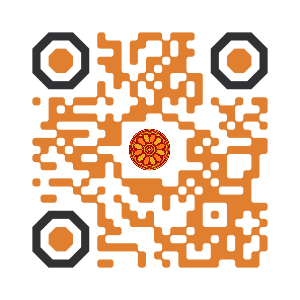 Kongkoon Tochaiwat (Department of Innovative Real Estate Development, Faculty of Architecture and Planning, Thammasat University, THAILAND),
Kongkoon Tochaiwat (Department of Innovative Real Estate Development, Faculty of Architecture and Planning, Thammasat University, THAILAND),
Cuttaleeya Jiraprasertkun (Department of Architecture, Faculty of Architecture, Kasetsart University, THAILAND),
Narissa Wanichwatunyou (Department of Innovative Real Estate Development, Faculty of Architecture and Planning, Thammasat University, THAILAND and Wealthproperty 24 Co., Ltd., THAILAND).
Disciplinary: Multidisciplinary (Real Estate Business, Customer Behaviors, Landscape Architecture).
DOI: 10.14456/ITJEMAST.2020.159
Keywords: Detached houses; Choices of residence; Needs of buyers; Customers' satisfaction; Buyers' budgets; Housing landscape design; Kano model classification.
AbstractThis research studied an approach in the classification of house landscape elements of detached houses in housing projects in the Bangkok Metropolitan Region in order to better understand buyers' needs. The Kano Model Classification was used to analyze three categories of house landscape elements: (1) must-be quality (2) one-dimensional and (3) attractive elements. In this quantitative research, 202 buyers selected through quota sampling were requested to answer a questionnaire. The research results enable property developers or designers to profoundly understand the buyers' needs and to apply this understanding as a guideline in designing the house landscape elements to answer the buyers' needs within limited budgets to ensure the housing projects' success.
Paper ID: 11A8R -
ENTERPRISE RISK MANAGEMENT AND PERFORMANCE OF PAKISTAN MANUFACTURING FIRMS: DOES THE EQUITY OWNERSHIP MATTER?
 Saqib Muneer (Department of Economics and Finance, College of Business Administration, University of Hail, Hail, SAUDI ARABIA).
Saqib Muneer (Department of Economics and Finance, College of Business Administration, University of Hail, Hail, SAUDI ARABIA).
Disciplinary: Management and Financial Science.
DOI: 10.14456/ITJEMAST.2020.160
Keywords: Risk management practices; PSE; Corporate's performance; Firm's performance; Enterprise risk management (ERM); Risk management strategies; Corporate's risk challenges; Equity market, Risk monitoring; Risk culture; Risk compliance.
AbstractThe increasing bankruptcies, around the world, have triggered a debate on the relationship between risk management practices and their impact on the performance of manufacturing firms listed in Pakistani stock exchange. The prime objective of this study is to explore the link between enterprise risk management (ERM) and the performance of manufacturing firms in Pakistan. This study has also examined the mediating role of equity ownership in the relationship between enterprise risk management and the performance of manufacturing firms. The response rate is 64.1 percent. The SEM-PLS is used to analyze the data. The resource-based view and agency theory have used to develop the conceptual model of this study. The findings have provided support to the hypothesized results. The findings offer an in-depth and valuable insight into the issues related to enterprise risk management and the performance of manufacturing firms. Moreover, organizations become able to enhance their capabilities of operational and strategic decision-making. From a strategic perspective, the performance of a firm is increased by ERM along with a reduction in the costly surprises.
Paper ID: 11A8S -
COMPARISON OF THE CONSTRUCTION COSTS OF LEED AND NON-LEED COFFEE SHOPS IN BANGKOK, THAILAND
 Sopida Faengsomsri (Innovative Real Estate Development Program, Faculty of Architecture and Planning, Thammasat University, Thailand),
Sopida Faengsomsri (Innovative Real Estate Development Program, Faculty of Architecture and Planning, Thammasat University, Thailand),
Sittichai Naksukskul (PTT Innovation Institute, Thailand),
Thidarat Kridakorn Na Ayutthaya (Department of Environmental Engineering, Faculty of Engineering, Chiang Mai University, Thailand),
Damrongsak Rinchumphu (Center of Excellence for Natural Disaster Management (CENDIM), Chiang Mai University, Thailand and Department of Civil Engineering, Faculty of Engineering, Chiang Mai University, Thailand).
Disciplinary: Civil and Architectural Engineering.
DOI: 10.14456/ITJEMAST.2020.161
Keywords: Green building; LEED coffee shop; Interior design; Coffee shop construction; Construction cost; Green construction project; Sustainability.
AbstractThis study scrutinizes the construction costs difference between LEED and non-LEED of coffee shops in Bangkok, Thailand. This study provides an understanding of criteria that influence the construction cost of coffee shops those attached inside the buildings, such as shopping malls and department stores. This study is a quantitative research approach by collecting data from 24 coffee shops in several locations in Bangkok, Thailand. The results show that the overall project cost of projects with LEED certification is 5.20% higher than the non-LEED projects. Moreover, the cost per square meter of the air conditioning system of the LEED projects is significantly higher than non-LEED projects for 1.6 times, but other costs are not significantly different between those LEED and non-LEED projects. This can conclude that there are numbers of design items supporting LEED-certified achieving without extra cost. Such criteria are water efficiency, material and resources of interior decoration, and the quality and sanitary conditions in buildings. These criteria support the projects to satisfy the LEED requirement within competitive project cost.
Paper ID: 11A8T -
KEY FACTORS FOR SMART HOUSE QUALITY ASSURANCE
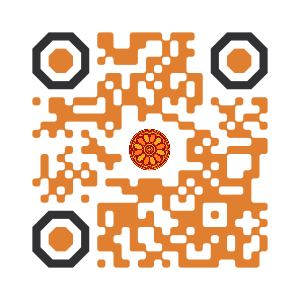 Alexander M. Martynov, Kirill M. Levkin, Semen A. Kotov, Roman A. Kondratenko, Alexander S. Novikov, Maxim A. Nazarenko(Department of Quality Management and Certification, MIREA-Russian Technological University, RUSSIA).
Alexander M. Martynov, Kirill M. Levkin, Semen A. Kotov, Roman A. Kondratenko, Alexander S. Novikov, Maxim A. Nazarenko(Department of Quality Management and Certification, MIREA-Russian Technological University, RUSSIA).
Disciplinary: Quality Management, Applied information Technology.
DOI: 10.14456/ITJEMAST.2020.162
Keywords: Shewhart control charts; Smart house system technology; Pareto chart; Shewhart control chart; Meeting users expectations; Smart home sensors; Quality management.
AbstractA smart house is one of up today technologies. Its quality is a very difficult question due to a variety of dimensions. This paper analyses current directions of smart house system technology improvement. Current studies are mainly dedicated to the integration of Internet of things (IoT) into smart house systems; specification of older people needs; specifications of sensors in smart house system; management and information management with the help of smart house systems; estimation via life quality changings. Moreover, based on the Pareto chart and Shewhart control chart, the paper studies quality of the systems. The main purpose of the paper is to find out what is the main factor of quality assurance. The paper takes into account seven different parameters. According to the current study results, it is the users' classification. Currently, the estimation of meeting users' expectations is very contradictory. In other words, some users are excited by the system, whereas the others are disappointed. Users studying should be specified in future studies due to in other aspects of quality improvement there no such opposite intentions. This study shows that users can estimate the smart house system quite differently. As a result, users’ segmentation for the smart house is the main task for future studies. Providers of smart house systems have to take it into account either.
Paper ID: 11A8U
Other issues:
Vol.11(7)(2020)
Vol.11(6)(2020)
Vol.11(5)(2020)
Vol.11(4)(2020)
Vol.11(3)(2020)
Vol.11(2)(2020)
Vol.11(1)(2020)
Vol.10(19)(2019)
Vol.10(18)(2019)
Vol.10(17)(2019)
Vol.10(16)(2019)
Vol.10(15)(2019)
Vol.10(14)(2019)
Vol.10(13)(2019)
Vol.10(12)(2019)
Vol.10(11)(2019)
Vol.10(10)(2019)
Vol.10(9)(2019)
Vol.10(8)(2019)
Vol.10(7)(2019)
Vol.10(6)(2019)
Vol.10(5)(2019)
Vol.10(4)(2019)
Vol.10(3)(2019)
Vol.10(2)(2019)
Vol.10(1)(2019)
Vol.9(2018)
Archives
Call-for-Papers
Call-for-Scientific PapersCall-for-Research Papers: ITJEMAST invites you to submit high quality papers for full peer-review and possible publication in areas pertaining engineering, science, management and technology, especially interdisciplinary/cross-disciplinary/multidisciplinary subjects.
To publish your work in the next available issue, your manuscripts together with copyright transfer document signed by all authors can be submitted via email to Editor @ TuEngr.com (no space between). (please see all detail from Instructions for Authors)
Publication and peer-reviewed process:
After the peer-review process (4-10 weeks), articles will be on-line published in the available next issue. However, the International Transaction Journal of Engineering, Management, & Applied Sciences & Technologies cannot guarantee the exact publication time as the process may take longer time, subject to peer-review approval and adjustment of the submitted articles.